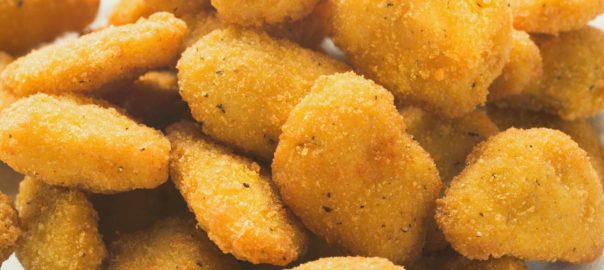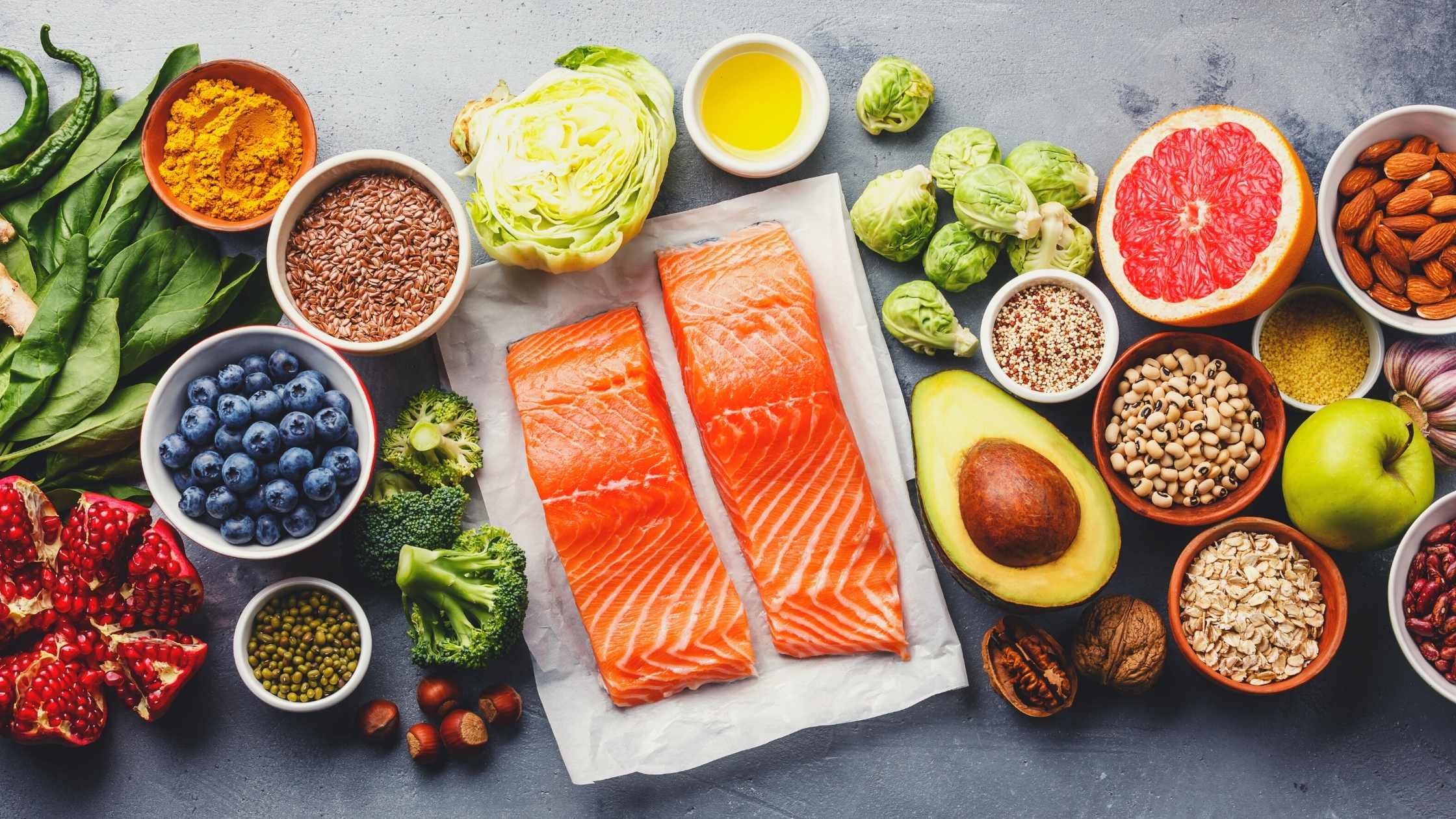In the world of food additives, the alphabet is used to abbreviate many of these man-made products. It is as if there is a whole new vocabulary developed just for them using the alphabet. So, today’s new “word” is TBHQ. This is a conglomeration of letters that frequently appears in the ingredient section of a food label. Most consumers skip right over it because they don't understand it. So, let me be the first person to assure you that nature does not produce food by alphabet soup. It should be clearly understandable in words like kale, apple, celery, and eggs.
Does TBHQ look familiar? If it doesn't that's okay, but now that I've brought it to your attention, I hope that when you read the label (and you are reading labels aren't you?) it will stand out. And not in a good way.
What is TBHQ
TBHQ is the abbreviation for tertiary butylhydroquinone. That's not exactly any clearer than the abbreviation. What exactly is TBHQ and why is it in the food? It's a preservative; a fake antioxidant if you will. TBHQ is used to stabilize oils and fats against oxidation and deterioration. Ultimately, this extends the shelf life and prevents rancidity of many products.
It's found in a wide array of foods. In fact, according to the Environmental Working Group, it is in approximately 1,250 food products. These items can include:
- processed fats and oils
- frying and cooking oils used at restaurants (that would especially be those fast-food restaurants)
- non-organic packaged foods
- frozen non-organic fish products
- soft drinks
- crackers
- cereals
- microwave popcorn,
- soy milk brands
And this is just a short list!
TBHQ can also appear in pet food. A really good reason to read those labels as well. After all, if you're not going to eat it why should your pet?
As mentioned in The Omnivore's Dilemma by Michael Pollan:
But perhaps the most alarming ingredient in a Chicken McNugget is tertiary butylhydroquinone, or TBHQ, an antioxidant derived from petroleum that is either sprayed directly on the nugget or the inside of the box it comes in to “help preserve freshness.” According to A Consumer's Dictionary of Food Additives, TBHQ is a form of butane (i.e. lighter fluid) the FDA allows processors to use sparingly in our food: It can comprise no more than 0.02 percent of the oil in a nugget. Which is probably just as well, considering that ingesting a single gram of TBHQ can cause “nausea, vomiting, ringing in the ears, delirium, a sense of suffocation, and collapse.” Ingesting five grams of TBHQ can kill.
While not exactly butane, TBHQ does share some molecular structure with other butyl molecules such as lighter fluid. As more research is done with TBHQ, more potential concerns arise.
Health Concerns
Immune Health – TBHQ activates a protein called Nrf2 which controls antioxidant function. This can cause Nrf2 to negatively interact with proteins that control the immune response such as white blood cell function. This is also the protein that can be affected when it comes to cancer cells.
Potential Carcinogen – Animal studies suggest that TBHQ may cause some cancerous and precancerous effects in the body. Plus, it may increase resistance to chemotherapy drugs and help cancer cells live longer.
Neurological System – areas such as vision disturbances and convulsions can occur if larger amounts are consumed.
Food Allergies – TBHQ has the potential to induce or worsen food allergies with even low doses of the food additive. This occurs because TBHQ can increase the IgE response to food allergens and exacerbate signs of hypersensitivity. Interestingly, these studies were done with amounts within what the average person might consume, especially if eating a diet consisting of a lot of processed foods.
Children may be more susceptible as there are claims that TBHQ can cause anxiety and restlessness in children. The Feingold Diet (a dietary approach to managing ADHD) suggest that TBHQ be on the “do not consume” list exactly for this reason.
Other Concerns - Animal studies appear to indicate the possibility of large amounts causing stomach problems and oxidative DNA damage.
It’s Easy To Be Overexposed to TBHQ
The challenge with artificial food preservatives is the cumulative effect.
Let’s look at what a day of eating foods that contain TBHQ could look like:
- Breakfast might include quick and easy pop tarts.
- For lunch you choose something like “Maruchan Instant Lunch” because it is easy to bring anywhere.
- Now you have had a busy day and want something quick for dinner and choose a frozen pizza. Thus far each meal has had TBHQ in it.
- Wait, don’t forget about that evening snack of microwave popcorn and soda! This is the cumulative effect of eating a diet with a lot of processed foods.
Individually each item may not produce a challenge right away, but this type of diet (high in processed foods) can bring the total TBHQ amount consumed to problematic levels. It has been found that consuming 1 gram of TBHQ can cause you to experience symptoms ranging from nausea and vision disturbances to collapse.
And it’s not just found in food. Other products that may contain TBHQ include cosmetics, hair dye, lipstick, eyeshadow, biodiesel, lacquers, resins, and varnishes. As you use these products, the exposure through applying it to your skin or breathing it in can also have an impact.
What To Do About TBHQ?
The good news is that TBHQ is water soluble – that means it is not highly likely to be stored in the body.
As you begin to eat whole food and eliminate processed foods, you will reduce the potential dangers of TBHQ and invest in your health. Being well hydrated will also help your body to flush toxins. Definitely a good thing at any time, but especially if you are shifting away from eating a diet high in processed foods.
My suggestion, as always, remains the same. Eat whole food, understand what you are eating, and read the label.
[expand title="Sources"]
- Processed Foods with the Preservative TBHQ retrieved from https://www.ewg.org/sites/default/files/u352/EWG_TBHQ_FullChart_C01.pdf?_ga=2.23891774.562716125.1616960118-2067521987.1616960118
- Wu S, Lu H, Bai Y. Nrf2 in cancers: A double-edged sword. Cancer Med. 2019;8(5):2252-2267. doi:10.1002/cam4.2101. Retrieved from https://www.ncbi.nlm.nih.gov/pmc/articles/PMC6536957/.
- Cheryl Rockwell, Venugopal Gangur, James Pestka, Radhakrishna Para, Alexandra Turley, Joseph Zagorski, Jenna Bursley, Heather Dover. The Nrf2 activator, tBHQ, exacerbates immediate hypersensitivity response to food allergen (HYP7P.315). The Journal of Immunology. May 1, 2014, 192 (1 Supplement) 119.30. Retrieved from https://www.jimmunol.org/content/192/1_Supplement/119.30.short.
- Negar Gharavi, Susan Haggarty and Ayman O. S. El-Kadi, “ Chemoprotective and Carcinogenic Effects of tert-Butylhydroquinone and Its Metabolites”, Current Drug Metabolism 2007; 8(1) . https://doi.org/10.2174/138920007779315035. Retrieved from https://www.eurekaselect.com/58473/article.
- Stolze K, Nohl H. Free radical formation and erythrocyte membrane alterations during MetHb formation induced by the BHA metabolite, tert-butylhydroquinone. Free Radic Res. 1999 Apr;30(4):295-303. doi: 10.1080/10715769900300321. PMID: 10230808. Retrieved from https://pubmed.ncbi.nlm.nih.gov/10230808/.
- Wang XJ, Sun Z, Villeneuve NF, et al. Nrf2 enhances resistance of cancer cells to chemotherapeutic drugs, the dark side of Nrf2. Carcinogenesis. 2008;29(6):1235-1243. doi:10.1093/carcin/bgn095. Retrieved from https://www.ncbi.nlm.nih.gov/pmc/articles/PMC3312612/.
[/expand]





